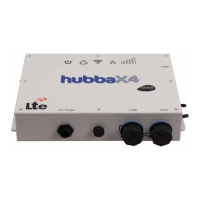
Do you have a question about the Buzz Connect Hubba-X4 Duo and is the answer not in the manual?
| Brand | Buzz Connect |
|---|---|
| Model | Hubba-X4 Duo |
| Category | Wireless Router |
| Language | English |
Details the meaning of each status light on the device's front panel for quick diagnostics.
Instructions for correctly connecting the DC power supply, including voltage and polarity requirements.
Guidance on installing and positioning the external GSM antenna for optimal signal strength.
A step-by-step procedure for safely removing and installing SIM cards, including handling internal components.
How to connect to the device's web GUI using a browser and log in with default credentials.
Explanation of the main status screen, showing signal strength, data usage, and connection status.
Steps to manually set up Access Point Names (APNs) for establishing mobile data connections.
Configure SIM selection, APN, username, password, and control mobile data roaming behavior.
Select data connection type (2G/3G/4G) and configure on-demand data usage for efficiency.
Set up automatic switching between SIM cards based on network signal or data availability.
Configure the router to use a wired connection as the primary WAN, with mobile as a backup.
Enable and configure the device to connect to and rebroadcast an external Wi-Fi network.
Configure rules to allow incoming internet traffic to specific devices or services on the local network.
Configure DDNS to ensure consistent access to the router via a hostname, even with dynamic IP addresses.
Customize Wi-Fi SSID, security type (WPA/WPA2), and password for the device's hotspot.
Set monthly data usage limits for SIM cards to prevent overage charges.
Instructions for assembling Cat5 connectors, noting the importance of shroud presence or absence.
